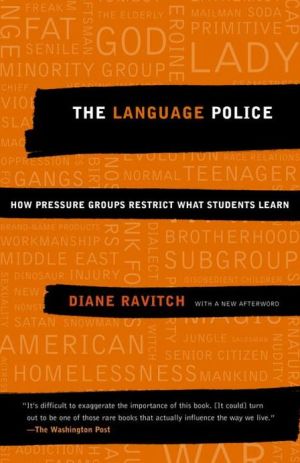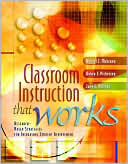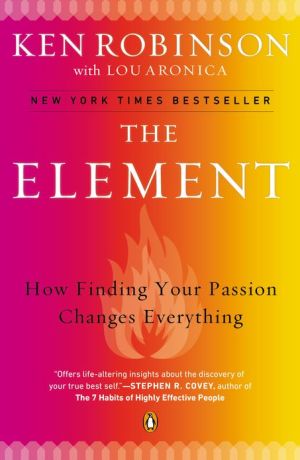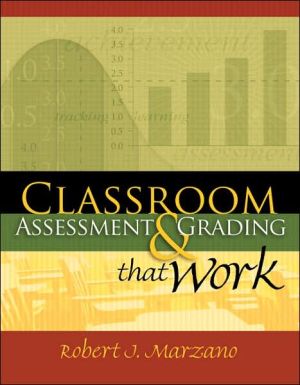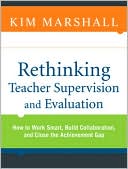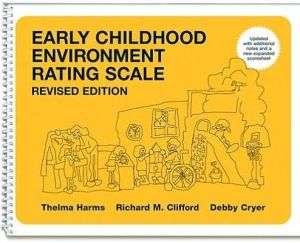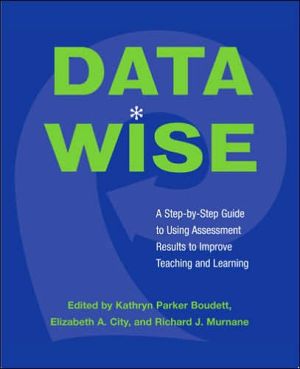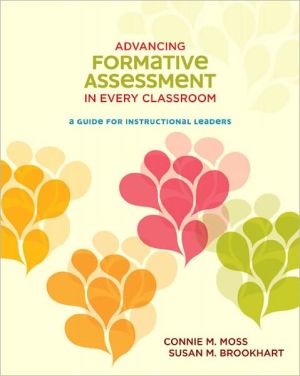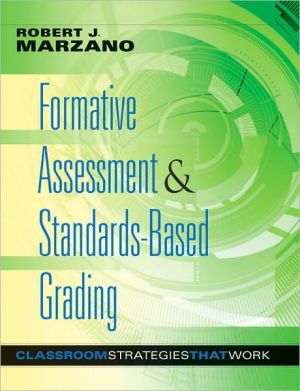The Language Police: How Pressure Groups Restrict What Students Learn
If you’re an actress or a coed just trying to do a man-size job, a yes-man who turns a deaf ear to some sob sister, an heiress aboard her yacht, or a bookworm enjoying a boy’s night out, Diane Ravitch’s internationally acclaimed The Language Police has bad news for you: Erase those words from your vocabulary!\ Textbook publishers and state education agencies have sought to root out racist, sexist, and elitist language in classroom and library materials. But according to Diane Ravitch, a...
Search in google:
In this text for educators and concerned citizens, educational historian Ravitch reveals how interest groups on the left and right of the political spectrum have pressured publishers to self-censor texts for use in the classroom. She contends that the removal of potentially controversial words and passages compromises the educational value of these texts. As an alternative, she suggests explaining to students that sometimes history hasn't been very nice while still allowing historical actors to speak for themselves. Annotation ©2003 Book News, Inc., Portland, OR The New York Times Sunday Book Review Ravitch, finding the system and its results ''an outrage,'' passionately insists that ''the reign of censorship must end.'' Her remedies, along with better-educated teachers: Eliminate the statewide textbooks adoption process, and substitute a competitive market, with school districts choosing their own books and materials. And let the sun shine in by compelling all states and publishers to reveal their bias guidelines and by placing on the Internet all the deliberations of bias and sensitivity panels, including what they reject. ''No one asked the rest of us whether we want to live in a society in which everything objectionable to every contending party has been expunged from our reading materials,'' she notes. It's time, indeed, that we were asked. — Daniel J. Kevles
One: Forbidden Topics, Forbidden Words\ The greatest dangers to liberty lurk in insidious en- croachment by men of zeal, well-meaning but without understanding.\ —Justice Louis D. Brandeis\ \ I decided to write this book as a way of solving a mystery. After many years of studying the history of education and writing about the politics of education, I discovered some things that shocked me. Almost by accident, I stumbled upon an elaborate, well-established protocol of beneficent censorship, quietly endorsed and broadly implemented by textbook publishers, testing agencies, states, and the federal government. I did not learn about this state of affairs in one fell swoop, but one step at a time. Like others who are involved in education, be they parents or teachers or administrators or journalists or scholars, I had always assumed that textbooks were based on careful research and designed to help children learn something valuable. I thought that tests were designed to assess whether they had learned it. What I did not realize was that educational materials are now governed by an intricate set of rules to screen out language and topics that might be considered controversial or offensive. Some of this censorship is trivial, some is ludicrous, and some is breathtaking in its power to dumb down what children learn in school.\ Initially these practices began with the intention of identifying and excluding any conscious or implicit statements of bias against African Americans, other racial or ethnic minorities, and females, whether in tests or textbooks, especially any statements that demeaned members of these groups. These efforts were entirely reasonable and justified. However, what began with admirable intentions has evolved into a surprisingly broad and increasingly bizarre policy of censorship that has gone far beyond its original scope and now excises from tests and textbooks words, images, passages, and ideas that no reasonable person would consider biased in the usual meaning of that term.\ The story that I now tell began in 1997, when Bill Clinton delivered his State of the Union address. On that occasion, Clinton declared his support for national tests, and said that the states should test fourth-grade children in reading and eighth-grade children in mathematics, to make sure that they could meet national standards of proficiency. Soon after the president gave that speech, the U.S. Department of Edu- cation contracted with test publishers to develop voluntary national tests of reading and mathematics for those grades. The goal was to provide individual test scores to parents of specific children, to their teachers, and to their schools.\ As someone who had been active in supporting the movement for academic standards during the 1980s and 1990s, both as a private citizen and as an assistant secretary in the U.S. Department of Education during the administration of President George H. W. Bush, I applauded Clinton’s proposal. When Bush launched his education reform initiative in 1991, he too called for national achievement testing for individual students. His plan never got off the ground, however, due to the inherently controversial nature of involving the federal government in decisions that usually belong to state and local governments; his fellow Republicans opposed it, as did the Democrats in Congress.\ I supported Clinton’s program for national testing, but feared that it would falter unless it was strictly nonpartisan. If it remained under the control of political appointees in the Department of Education, it would lose credibility; whatever they did, their decisions would be criticized by members of the other party in Congress, and the testing program would come under a cloud. I made that argument in an op-ed article in the Washington Post, urging the administration to transfer responsibility for the new tests from the Department of Education to the National Assessment Governing Board (NAGB), a nonpartisan federal agency that had been supervising national testing since 1990. Why, you might wonder, was there a controversy over national test- ing if there was already a federal agency giving national tests? Let me explain.\ Since 1969, the federal government has administered a test called the National Assessment of Educational Progress (known as NAEP, or “the nation’s report card”). NAEP tests are given to national and state samples of students in reading, mathematics, writing, science, history, and other academic subjects. NAEP periodically reports on the aggregate achievement of American students in the fourth, eighth, and twelfth grades, but by law it cannot measure the academic performance of any particular school district, school, or individual student. NAEP is the only regular, consistent national measure of achievement in the United States (the SAT and ACT test only college-bound students). In 1990, Congress created NAGB as a nonpartisan citizens’ board to supervise NAEP; NAGB is composed of a score of independent members, appointed by the secretary of education. NAGB has a reputation for integrity, and it seemed the right place to assign control of the new national tests that might eventually be given to millions of individual children, not just statistical samples of students. Putting the two testing programs into the same organization would also assure that the new tests proposed by Clinton for individual students would be as academically rigorous as the NAEP tests.\ After my op-ed article appeared, advocating the transfer of control of the national tests, Clinton nominated me as a member of NAGB (and announced it on his weekly radio broadcast). He also accepted my suggestion to assign responsibility for his testing proposal to that board. When I joined the board at its first meeting in 1998, I discovered that Clinton’s proposed voluntary national tests (VNT) had become an important agenda item. The board spent many hours discussing the development of the new tests, trying to figure out for whom they would be voluntary (for states? for school districts? for schools? for students?), how they would relate to the established standards of NAEP, what time of year they would be given, how long they would last, how to accommodate students with special needs, whether to offer them in any language other than English, and a variety of other prickly issues.\ Congress never approved the VNT. The tests were controversial from the start. Many Republicans feared that any national test commissioned by the government was the first step on a slippery slope toward federal control of education. Many Democrats objected to the emphasis on testing as opposed to new general-purpose funding. By the time Clinton left office in January 2001, his VNT proposal was dead, even though it consistently ranked high in public-opinion polls. For nearly three years, however, NAGB and the test publishers who won the federal contract worked faithfully to bring the idea to fruition, keeping a watchful eye on Congress to see whether it would eventually be authorized. It never was.\ During the time that the VNT was a live possibility, the first priority was to create test questions. As a new member of the board, I was assigned to a committee that reviewed reading passages for the fourth-grade test. The committee included experienced teachers and a state superintendent of education. All of us read the passages submitted by the test contractor, a major publisher that had won a multimillion-dollar contract from the Department of Education. The committee approved passages that seemed appropriate for fourth-grade students and rejected passages that seemed dull, obscure, or incoherent. Our goal was to find short reading passages of about one to three pages, both fiction and nonfiction, written in language that was clear, vivid, and engaging, as well as test questions that gauged children’s comprehension of what they had read.\ Our committee evaluated many passages for fourth-grade students. The passages had been previously published in children’s magazines or anthologies; before they reached us, they had been thoroughly vetted by the original publisher’s in-house experts. We too read them with care. As stewards of the VNT, we knew that we had to exercise extreme caution, since parents, teachers, and the media in every part of the United States would complain if anything inaccurate or untoward were to slip through unnoticed.\ Most of the stories were unobjectionable; none was great literature, but for the most part, they were fairly engaging stories about children, animals, science, or history. Nearly two years later, I was surprised to learn that the passages approved by our committee had subsequently been evaluated yet again by the test contractor’s “bias and sensitivity review” panel. This panel, it turned out, recommended the elimination of several stories that we had approved. I learned that it was standard operating procedure in the educational testing industry to submit all passages and test questions to a bias and sensitivity review. Typically those who serve on these review panels are not drawn from academic fields such as English or history. Usually they have a professional background in bilingual education, diversity training, English as a second language, special education, guidance, or the education of Native Americans or other special populations. Such panels are hired by publishers, as well as by state education agencies, to screen every test and every textbook for potential bias. In the case of the voluntary national tests, the panel that scrutinized the items found biases that none of us—neither test experts nor members of NAGB—had perceived.\ When publishers of textbooks and tests conduct bias and sensitivity reviews, these reviews are never released to the public; they are proprie- tary materials, and they belong to the company. I could not find a publisher willing to release them. State education departments guard the results of their bias reviews with equal zeal, even though these should be available for public scrutiny as public documents. I saw the bias and sensitivity reviews for the VNT only because I was a member of NAGB’s reading committee; having reviewed the passages, I had the right to know why bias reviewers wanted to eliminate some of them.\ When I read the panelists’ reasons for rejecting passages, I realized that their concept of bias was not the same as the common understanding of the term. As far as I could tell, they did not actually find any examples of racial or gender bias as most people understand it. There were no stories in which girls or children who were members of a racial or ethnic minority were portrayed in a demeaning way. Some of the panel’s interpretations were, frankly, bizarre. When NAGB’s reading committee convened by teleconference to discuss the recommendations of the bias panel, there was first an embarrassed silence. Then, one by one, each of us chimed in and expressed our own disagreement with the bias reviewers. We eventually agreed, by unanimous vote, to reject their recommendations.\ There are always other test passages to use, so the acceptance or rejection of these particular passages is hardly a cause for alarm. What is alarming, however, is the absurd reasoning that was invoked to justify the elimination of these readings. Consider that the test contractor, Riverside Publishing, is responsible for one of the most esteemed tests in the nation, the Iowa Test of Basic Skills; consider that it assembled a reputable and experienced group of people to conduct the bias and sensitivity review. The judgments expressed by this panel were not idiosyncratic; they represented state-of-the-art thinking in the practice of bias review. The reviewers acted in compliance with what are considered industry standards. The process of analyzing text that I will describe is now being applied routinely to other tests and textbooks used in American schools. The bias and sensitivity reviewers work with assumptions that have the inevitable effect of stripping away everything that is potentially thought-provoking and colorful from the texts that children encounter. These assumptions narrow what children are exposed to, at least on tests and in textbooks. Parents, teachers, and the public need to be aware of these assumptions and the reasoning process behind them, because they are reducing the curriculum in the schools to bland pabulum.\ So what did the bias and sensitivity reviewers recommend? The only way to explain their strained interpretations is to give actual examples. I cannot reproduce the stories, because some of them may yet appear one day as test passages. But I will paraphrase the story sufficiently so that the reader may judge whether the charge of bias is persuasive. The examples, I believe, will demonstrate that the concept of bias has become detached from its original meaning and has been redefined into assumptions that defy common sense.\ \ The History and Uses of Peanuts\ \ Two of the stories that the bias reviewers rejected were short informational passages about peanuts. One passage described peanuts as legumes, in the same family as peas and beans, and lauded them as nutritious. The bias panel recommended the elimination of this selection because it asserted that peanuts are a healthy snack. It was wrong to describe peanuts as nutritious, said the panel, because some peo- ple may have a severe allergic reaction to them. At first glance, this judgment would seem to lie outside the scope of a bias and sensitivity review. The reviewers apparently assumed that a fourth-grade student who was allergic to peanuts might get distracted if he or she encountered a test question that did not acknowledge the dangers of peanuts. The NAGB reading committee recommended keeping the passage and adding an acknowledgment that some people are allergic to peanuts.\ The second passage was a brief history of peanuts. It said that peanuts were first cultivated by South American Indians, especially the Incas. After Spanish explorers conquered the Incas, and Portuguese explorers defeated many Brazilian tribes, it said, the peanut was shipped to Europe for cultivation. Later, in the United States, African slaves planted and developed peanut crops. The famed scientist George Washington Carver discovered hundreds of uses for the peanut. This was not the world’s most exciting story, but the NAGB reading committee concluded that it contained some interesting historical information as well as praise for an African American scientist, all of which were pluses. However, the bias and sensitivity panelists opposed the passage for two reasons: first, it used the term African slave, and second, it stated that Spanish and Portuguese explorers defeated native tribes. To the NAGB reading committee, these were puzzling judgments. Why was it wrong to use the term African slave? (Apparently the correct usage now is enslaved African.) Nor did we understand why the panel wanted to kill the passage for saying that some Brazilian tribes had been defeated by European explorers. The bias reviewers did not challenge the historical accuracy of this statement, but they did not want it to appear. They must have concluded that these facts would hurt someone’s feelings. Whose feelings would be wounded? Children of Spanish descent? Children of Portuguese descent? Children descended from Brazilian tribes? Perhaps the word tribe was offensive. None of this was clear. What was clear, however, was that the passage did not express anything that a reasonable person would consider biased toward any group.\ \ Women and Patchwork Quilting\ The bias and sensitivity reviewers rejected a passage about patchwork quilting by women on the western frontier in the mid-nineteenth century. The passage explained that mothers in that time taught their daughters to sew, and together they made quilts for the girl’s dowry when she married. Quilting was an economic necessity because it saved money, and there were no factory-made quilts available until the end of the nineteenth century. The passage briefly explained how quilts were assembled and described them as works of art. The in- formation in the passage was historically accurate, but the bias and sensitivity panel (as well as the “content expert panel”) objected to the passage because it contained stereotypes of females as “soft” and “submissive.” Actually, the passage did nothing of the sort. It was a description of why quilting was important to women on the frontier and how it was done. Nothing in the passage excluded the possibil- ity that mothers and daughters were riding the range, plowing the fields, and herding cattle during the day. The reviewers objected to the portrayal of women as people who stitch and sew, and who were concerned about preparing for marriage. Historical accuracy was no defense for this representation of women and girls, which they deemed stereotypical.\ The Blind Mountain Climber\ One of the stranger recommendations of the bias and sensitivity panel involved a true story about a heroic young blind man who hiked to the top of Mount McKinley, the highest peak in North America. The story described the dangers of hiking up an icy mountain trail, especially for a blind person. The panel voted 12–11 to eliminate this inspiring story. First, the majority maintained that the story contained “regional bias,” because it was about hiking and mountain climbing, which favors students who live in regions where those activities are common. Second, they rejected the passage because it suggested that people who are blind are somehow at a disadvantage compared to people who have normal sight, that they are “worse off” and have a more difficult time facing dangers than those who are not blind.\ “Regional bias,” in this instance, means that children should not be expected to read or comprehend stories set in unfamiliar terrain. A story that happened in a desert would be “biased” against children who have never lived in a desert, and a story set in a tropical climate would be biased against those who have never lived in a tropical climate. Consider the impoverishment of imagination that flows from such assumptions: No reading passage on a test may have a specific geographical setting; every event must occur in a generic locale. Under these assumptions, no child should be expected to understand a story set in a locale other than the one that he or she currently lives in or in a locale that has no distinguishing characteristics.\ Even more peculiar is the assumption by the panel’s majority that it is demeaning to applaud a blind person for overcoming daunting obstacles, like climbing a steep, icy mountain trail. It is not unreasonable, I believe, to consider blindness to be a handicap for a person facing physical danger. By definition, people who are blind cannot see as much or as well as people who have sight. Is it not more difficult to cope with dangerous situations when one cannot see? Yet, perversely, the bias and sensitivity panel concluded that this story celebrating a blind athlete’s achievements and his heroism was biased against people who are blind. Blindness, apparently, should be treated as just another personal attribute, like the color of one’s hair, or one’s height. In the new meaning of bias, it is considered biased to acknowledge that lack of sight is a disability.\ Gender Bias in a Fable of Aesop\ The bias and sensitivity reviewers did find a reading selection that had the earmarks of gender bias. It was Aesop’s familiar fable “The Fox and the Crow.” In the story, Master Fox spies Mistress Crow sitting on a tree branch with a piece of cheese in her beak. He flatters her, tells her that she has a beautiful voice, and when she opens her beak to sing, the cheese falls to the cunning fox. The panel, of course, spied gen- der bias at work since the crow—a female—is vain and foolish, while the fox—a male—is intelligent and clever. The crow represented the stereotypical depiction of women as overly concerned about their appearance and easily deceived by flattering men. The fact that this gender relationship had been part of the Aesop story for generations was irrelevant. The NAGB reading committee did not want to lose the Aesop fable, because it was all too rare to find any instances of classic literature on national tests of reading. So, to ameliorate the concerns of the bias committee, we proposed to switch the gender of the fox and the crow, either to make them both the same gender, or to make Mistress Fox the flatterer of Master Crow. Aesop might be startled to find a woman flattering a man or a guy flattering another guy or a woman flattering another woman, but at least we were able to hang on to a classic fable.\ \ A Story Condemned by Association\ Another passage suggested for deletion by the bias reviewers was an animal fable taken from an anthology edited by William J. Bennett, the former secretary of education, author, and political commentator known for his conservative views. The fable, attributed to Native Americans, told about animals emerging from the darkness to “find” sunlight. Several members of the panel suggested that Bennett’s name alone would be sufficient to distress many teachers and parents. They did not suggest that fourth-grade children taking the tests would be distressed, since Bennett’s name would be unknown to them. The panel also rejected the fable because it implied that “darkness” and “blackness” were synonymous with fumbling around or not being able to see. The members saw this linkage as bias, presumably suggesting racial bias. Only one of the bias experts on the review panel argued that it was censorship to delete this passage simply because of the political views of its anthologist. However, even this member agreed with the other panel members that the fable should be removed because of its unfortunate references to darkness. So far as the panel was concerned, to show a preference for light over darkness was a manifestation of bias.\ \ Deleting Mount Rushmore\ Perhaps the most startling analysis by the bias reviewers concerned a short biography of Gutzon Borglum, who designed the monument at Mount Rushmore. This monument, consisting of gigantic heads of Presidents George Washington, Thomas Jefferson, Abraham Lincoln, and Theodore Roosevelt, is located in the Black Hills of South Dakota. It is one of the most famous, most widely reproduced images in the United States. Millions of tourists have traveled to South Dakota to see it. Whether one likes it or hates it, it is there. For most people, the monument has positive connotations, suggesting a sense of history and patriotism.\ The bias panel recommended that the biography of Borglum be dropped because Mount Rushmore is offensive to Native Americans. The panel maintained that the monument “is an abomination to the Black Hills because many Lakota people consider the Black Hills to be a sacred place to pray.” This is surely a dilemma. The Borglum sculpture on Mount Rushmore exists; it is an acclaimed national monument. Yet American children should not be allowed to read about it or its sculptor on a test because this might offend Lakota Indians, who wish that the sculpture were not there. The desire to rewrite history is one that continually plagues bias reviewers, as we shall see.\ Class Distinctions in the Ancient World\ The bias panel did not like a story about growing up in ancient Egypt. The story contrasted how people’s ways of living varied in accordance with their wealth and status. Some lived in palaces, others were noblemen, others were farmers or city workers. The size and grandeur of one’s house, said the story, depended on family wealth. To the naked eye, the story was descriptive, not judgmental. But the bias and sensitivity reviewers preferred to eliminate it, claiming that references to wealth and class distinctions had an “elitist” tone. The fact that these class distinctions were historically accurate was irrelevant to the reviewers. In the world that they wanted children to read about, class distinctions did not exist, not now and not in the past, either.\ An Environmentally Sound Dwelling\ One of the most charming informational stories that our committee reviewed was about a rotting stump in the forest that provided shelter and food to a succession of insects, birds, plants, and animals. The story probably would have passed muster with flying colors in light of its environmentalist emphasis on nature’s ways of recycling except that it made the fatal mistake of comparing the rotting stump to an apartment house for the many different creatures of the forest. The twenty members of the bias committee voted unanimously to reject this passage because, in their view, it contained a negative, demeaning stereotype of apartments and people who live in them. If this passage were included on a test, the panel claimed, poor inner-city children would be upset: “Youngsters who have grown up in a housing project may be distracted by similarities to their own living conditions. An emotional response may be triggered.”\ This was a strained reading of the story. First, it is untrue that only those who are poor live in apartment houses. There are luxury high-rise apartment houses, as well as apartment buildings occupied by middle-income people. Second, the story tried to show the environmental beauty of the rotting tree stump, to describe the stump as a gracious and inviting home, as well as a restaurant, to all sorts of creatures. The story did not portray either the tree stump or the insects and forest animals in a negative light. Yet the bias committee imagined that poor children who had grown up in a housing project would see themselves as insects living in a rotting tree stump if they read this passage. Following the logic of the bias reviewers, every story had to be read literally, with no allowances for simile, metaphor, or allusion.\ The Silly Old Lady\ The bias panel rejected a passage about a silly old woman who keeps piling more and more gadgets on her bicycle until it is so overloaded that it tumbles over. The language was clever, the illustrations were amusing, and the story was higher in literary quality than the other fourth-grade reading passages proposed for the test. But the bias panel rejected it. They felt that it contained a negative stereotype of an eccentric old woman who constantly changed her mind; apparently women, and especially women of a certain age, must be depicted only in a positive light. Why would it upset or distract fourth-grade children to see an older woman acting eccentrically or changing her mind? The bias panel thought that children would get the wrong idea about older women if they read such a story. They might conclude that all women of a certain age behaved in this way.\ The Arrogant King\ This story, a folktale from Asia, was about a king who had a marvelous elephant. The king is jealous because his subjects admire the elephant more than they admire him. He tells the elephant trainer to command the animal to do more and more difficult tricks, until the elephant ascends into the air with the trainer and flies away to a better kingdom. In the original story, the wise king in the next kingdom eventually reduces the worthless king to ashes, but that “violent” conclusion was deleted by an earlier bias review. The bias panel rejected the passage because the king was portrayed as mean and jealous. The panelists did not like this negative characterization, even though the king was indeed mean and jealous. Furthermore, the king used harsh language; he yelled, he roared, he screamed, and he shouted at the elephant’s trainer. Of course, if the king had been a mild and friendly fellow, the story would not have made any sense at all, but the bias panel did not approve of such behavior. The panelists also objected because the trainer had called the king “a worthless fool” when he flew away with the beautiful elephant. But the trainer was right: the king was a worthless fool. I could not imagine what any of these complaints had to do with bias and sensitivity. Was the passage biased against arrogant and jealous kings? Were they afraid that children would be upset to read about a king who yelled and screamed at an underling?\ The Even Exchange\ This story came from a children’s book by an African American author. It was about an African American girl who wanted to learn how to jump rope like the other girls in her neighborhood. She meets a neighbor who is an expert at jumping rope, but who is attending summer school because she is not very good at math. The new girl is good at math, so the two agree to teach each other what they do best. The bias reviewers did not like this story at all. They found that it had serious bias problems because it showed an African American girl who was weak in math and was attending summer school. The fact that this character thought of herself as not very good at math was also deeply offensive and stereotypical, the bias reviewers believed. Even though the author was African American and her book was intended to bolster the self-esteem of black girls, that did not carry any weight with the bias panel. African American children could be portrayed only in a positive light. Anything that showed weakness suggested negative stereotyping. In this case, one African American girl was good at math, and the other was not. So far as I could tell, the story showed human variability, not negative racial stereotyping, with each girl displaying different weaknesses and different strengths.\ \ The Selfish Rich Baker\ This tale was about a rich baker who got angry when a poor traveler sniffed his wares. The baker goes to court to demand that the poor fellow pay him for the smells he had “stolen.” The judge, however, rules in favor of the poor man and fines the rich baker for his meanness. The bias committee unanimously opposed the passage on grounds of socioeconomic bias. The panelists claimed that the story set up an antagonism between the rich baker and the poor traveler. It presumed the poor traveler to be guilty of doing something wrong because of his poverty. Of course, the story did no such thing. The rich baker was rebuked and fined for his arrogance and hostility, begrudging the poor traveler even a whiff of his baked goods. He was judged harshly for his lack of charity and his greed. I could not understand how reviewers could regard this passage as biased against the poor traveler unless they failed to grasp the point of the story.\ The Friendly Dolphin\ This passage was about dolphins and what wonderful creatures they are. It told the story of a legendary dolphin that guided ships through a dangerous channel. Perhaps in anticipation of a bias review, the story left out the part of the legend in which a passenger on one ship shoots the faithful dolphin, which survives but never guides that particular ship again. Fourth graders would probably enjoy reading about dolphins, particularly ones that befriend humans. No matter; the bias reviewers unanimously rejected the story for having a regional bias in favor of those who live by the sea. Once again, the concept of regional bias presumes that any story that takes place in a singular location—the sea, the mountains, the desert, a forest, the jungle—is inherently inaccessible to those who don’t live in the same location.\ \ No More Owls\ The passage about owls was like a children’s encyclopedia entry. It described how their keen eyesight and hearing enabled them to hunt at night for rodents. When I saw that this passage was rejected, I imagined that it was because of the violence associated with hunting (although that’s how owls survive). I was wrong. The passage was rejected because a Native American member of the bias committee said that owls are taboo for the Navajos. Consequently the entire committee agreed that the passage should be dropped. The test publisher added a notation that the owl is associated with death in some other cultures and should not be mentioned anymore, neither in texts nor in illustrations.\ Here is a classic problem presented by today’s bias and sensitivity review process. If any cultural group attributes negative connotations to anything, or considers it taboo or offensive, then that topic will not be referred to, represented, described, or illustrated on tests. But owls exist. They are real birds. They are not creatures of the imagination. Nevertheless, to avoid giving offense, the tests will pretend that owls don’t exist. Owls are to be deleted and never again mentioned to the highly vulnerable and sensitive\ From the Hardcover edition.
AcknowledgmentsA note to the reader1Forbidden topics, forbidden words32The new meaning of bias193Everybody does it : the textbook publishers314Everybody does it : the testing companies505Censorship from the Right626Censorship from the Left797The mad, mad, mad world of textbook adoptions978Literature : forgetting the tradition1129History : the endless battle13310The language police : can we stop them?157Afterword171App. 1A glossary of banned words, usages, stereotypes, and topics183App. 2The Atkinson-Ravitch sampler of classic literature for home and school219Notes251Bibliography259Index263
\ The Washington PostIt's difficult to exaggerate the importance of this book. Whether The Language Police will turn out to be one of those rare books that actually influence the way we live -- Upton Sinclair's The Jungle, John Steinbeck's The Grapes of Wrath, Rachel Carson's Silent Spring, Ralph Nader's Unsafe at Any Speed -- remains to be seen, but surely one must pray that it does. Meticulously researched and forcefully argued, it makes appallingly plain that the textbooks American schoolchildren read and the tests that measure their academic progress have been corrupted by a bizarre de facto alliance of the far left and the far right. — Jonathan Yardley\ \ \ \ \ The Los Angeles TimesLucid, forceful, written with insight, passion, compassion and conviction, The Language Police is not only hair-raisingly readable but deeply reasonable. It should be required reading not only for parents, teachers and educators, but for everyone who cares about history, literature, science, culture and indeed the civilization in which we live. — Merle Rubin\ \ \ The New York TimesIn The Language Police, Ms. Ravitch -- a historian of education at New York University and the author of Left Back, a 2000 book about failed school reform -- provides an impassioned examination of how right-wing and left-wing pressure groups have succeeded in sanitizing textbooks and tests, how educational publishers have conspired in this censorship, and how this development over the last three decades is eviscerating the teaching of literature and history. — Michiku Kakutani\ \ \ \ \ The New York Times Sunday Book ReviewRavitch, finding the system and its results ''an outrage,'' passionately insists that ''the reign of censorship must end.'' Her remedies, along with better-educated teachers: Eliminate the statewide textbooks adoption process, and substitute a competitive market, with school districts choosing their own books and materials. And let the sun shine in by compelling all states and publishers to reveal their bias guidelines and by placing on the Internet all the deliberations of bias and sensitivity panels, including what they reject. ''No one asked the rest of us whether we want to live in a society in which everything objectionable to every contending party has been expunged from our reading materials,'' she notes. It's time, indeed, that we were asked. — Daniel J. Kevles\ \ \ \ \ Publishers WeeklyTextbook publishers are guilty of self-censorship, argues Ravitch (Left Back: A Century of Battles Over School Reform) in this polemical analysis of the anti-bias and sensitivity guidelines that govern much of today's educational publishing. Looking at lawsuits, school board hearings and private correspondence between textbook editors, Ravitch, a professor of education at New York University, shows how publishers are squeezed by pressure from groups on the right (which object to depictions of disobedience, family conflict, sexuality, evolution and the supernatural) and the left (which correct for the racism and sexism of older textbooks by urging stringent controls on language and images to weed out possibly offensive stereotypes)-most publishers have quietly adopted both sets of suggestions. In chapters devoted specifically to literature and history texts, Ravitch contends that these sanitized materials sacrifice literary quality and historical accuracy in order to escape controversy. She also discusses how current statewide textbook adoption methods have undermined competition and brought about the consolidation of the educational publishing industry, leading to more bland, simplistic fare. There is no shortage of colorful examples: a scientific passage about owls was rejected from a standardized test because the birds are taboo for Navajos; one set of stereotype guidelines urges writers to avoid depicting "children as healthy bundles of energy"; editors of a science textbook rejected a sentence about fossil fuels being the primary cause of global warming because "[w]e'd never be adopted in Texas." Readers will likely disagree about whether, on balance, anti-bias guidelines do more harm than good, but Ravitch's detailed, concise, impassioned argument raises crucial questions for parents and educators. Appendixes include "A Glossary of Banned Words, Usages, Stereotypes, and Topics" as well as a recommended reading list for students. Agents, Lynn Chu and Glen Hartley. (Apr.) Copyright 2003 Reed Business Information.\ \ \ \ \ Children's LiteratureDiane Ravitch issues a spooky wake-up call to parents and educators. In The Language Police, she explores the influence of conservative and liberal forces in this country on school textbooks. She maintains that textbook writers, editors and reviewers scrutinize these materials not just for racist and sexist language but for any potentially objectionable material. For example, to avoid occupational stereotyping, only women, not men, should be portrayed as lawyers and plumbers. Selections from great works of literature, including Mark Twain's Huckleberry Finn, are re-written. Ravitch challenges us to ask: How might these sanitized books, so different from the real world, affect youngsters' ability to reason and learn? 2003, Knopf, Ages 14 up. \ —Mary Quattlebaum\ \ \ \ \ KLIATTRavitch exposes bias among textbook publishers. This "huge scandal in American education" comes about in part because publishers do not want to offend states such as Florida, California, Texas, and New York, using the services of committees that search texts for biases of all kinds. As a result, texts have been expurgated of references to: sexual innuendo, the disabled, junk food, stereotyping of women (by showing them cooking, for example), scantily clad people, rainbows (gay agenda), age groups, religions, racial or ethnic groups, Satanism, rock and roll music, serious car accidents, parents quarreling, masks (tainted by association with Halloween), life on other planets (if the implication of evolution can be made), blizzards, hunting, gangs, ghosts, junk bonds, Christmas (or other religious holiday celebrations), abortion, farms, expensive gifts, bacon, alcoholic drinks, slaves, lying, divorce, Chief Sitting Bull (banned as a relic of colonialism; replaced with Totanka Iotanka), and corn chips. The list goes on. And it's not just textbooks that are being gutted. Tests are also carefully crafted to be inoffensive and unexciting. What to do? "When bias and sensitivity reviewers know that they can no longer censor and expurgate behind closed doors; when publishers must expect to sell their books to millions of individual teachers, not two or three powerful state school boards; when state school officials lose their power over the content of textbooks; when the public is informed about threats to intellectual freedom that is when the reign of the language police will end." Ravitch's book should be on the shelf of every public and school library in the country. KLIATT Codes:SA—Recommended for senior high school students, advanced students, and adults. 2003, Random House, Vintage, 271p. notes. bibliog. index., Ages 15 to adult. \ —Janet Julian\ \ \ \ \ Library JournalIn this troubling account, Ravitch (education, NYU) explores a contentious topic: publishers succumbing to political interests and thus producing bland, geographically indistinguishable, and historically inaccurate textbooks and test questions for use in American schools. Ravitch recounts her own experiences as a member of a federal testing board charged with developing test questions for a standardized test. Because publishers are aware that legal challenges can hurt sales, they generally avoid anything that could be perceived as controversial. As a result, they rejected many of her selections for a variety of reasons, many of which are closely examined here. For instance, an encyclopedic passage about owls was said to reflect cultural bias (owls are taboo in Navajo culture), a story about dolphins drew complaints about regional bias (as children could not possibly imagine what it's like to live near an ocean from reading about it), and a story about pioneer quilt making by women was perceived as sexist (pioneer women should only be depicted plowing fields and chopping wood). Unlike librarians, who are familiar with self-censorship and the influence that large states have on textbook publishers, parents, educators, students, and the general public will find this detailed and highly readable analysis alarming. Recommended for all libraries. [Previewed in Prepub Alert, LJ 1/03.]-Mark Alan Williams, Library of Congress Copyright 2003 Reed Business Information.\ \ \ \ \ Kirkus ReviewsJohnny and Janie can't read, can't find the Pacific on a map, can't even think-all thanks to official censorship that "represents a systemic breakdown of our ability to educate the next generation." So argues conservative pundit and Bush I assistant secretary of education Ravitch (Left Back, 2000, etc.) in a hard-hitting attack on the educational establishment and the interest groups, left and right, that control it. It's not so much that youngsters today are coddled with sensitive textbook language that bars reference to Africans as slaves or Jews as classical musicians or that dances around the non-niceties of Islamic fundamentalism, though this sort of censorship is awful enough in Ravitch's estimation; it's that contending political groups, from the Christian right to gay and lesbian alliances, have so thoroughly inserted their agendas into the classroom that it's become practically impossible to depict anyone doing anything, whether it's George Washington crossing the Delaware or George Washington Carver finding economic uses for peanuts, without arousing someone's ire. The governing idea in the resulting content-free, actor-free, active-verb-free educational scene is that no one be offended by any idea he or she is ever exposed to in the classroom-European Americans excepted, Ravitch writes, for they "are the only group that must be taken down a few pegs; their self-esteem is too high." Battles over curriculum and textbooks are nothing new, of course, as Ravitch shows; still, those battles have become particularly bitter in just the last few years: school boards, educators, and textbook publishers have so utterly given in to political pressure that no opinion-and almost no piece ofliterature-can be aired in a venue that once prided itself as a forum for the free expression of ideas, and that can now no longer teach anything of real value. Ravitch's assault is far-reaching, admirably complete, and generally nondoctrinaire. She takes on ideologues of whatever stripe, finds them all wanting, and offers, in detail, a reasonable alternative in the form of a curriculum that explains that sometimes history hasn't been very nice while allowing historical actors to speak for themselves. Of tremendous importance to parents, educational reformers, and anyone concerned with the myriad failings of the present culture. Agents: Lynn Chu, Glen Hartley/Writers Representatives\ \
